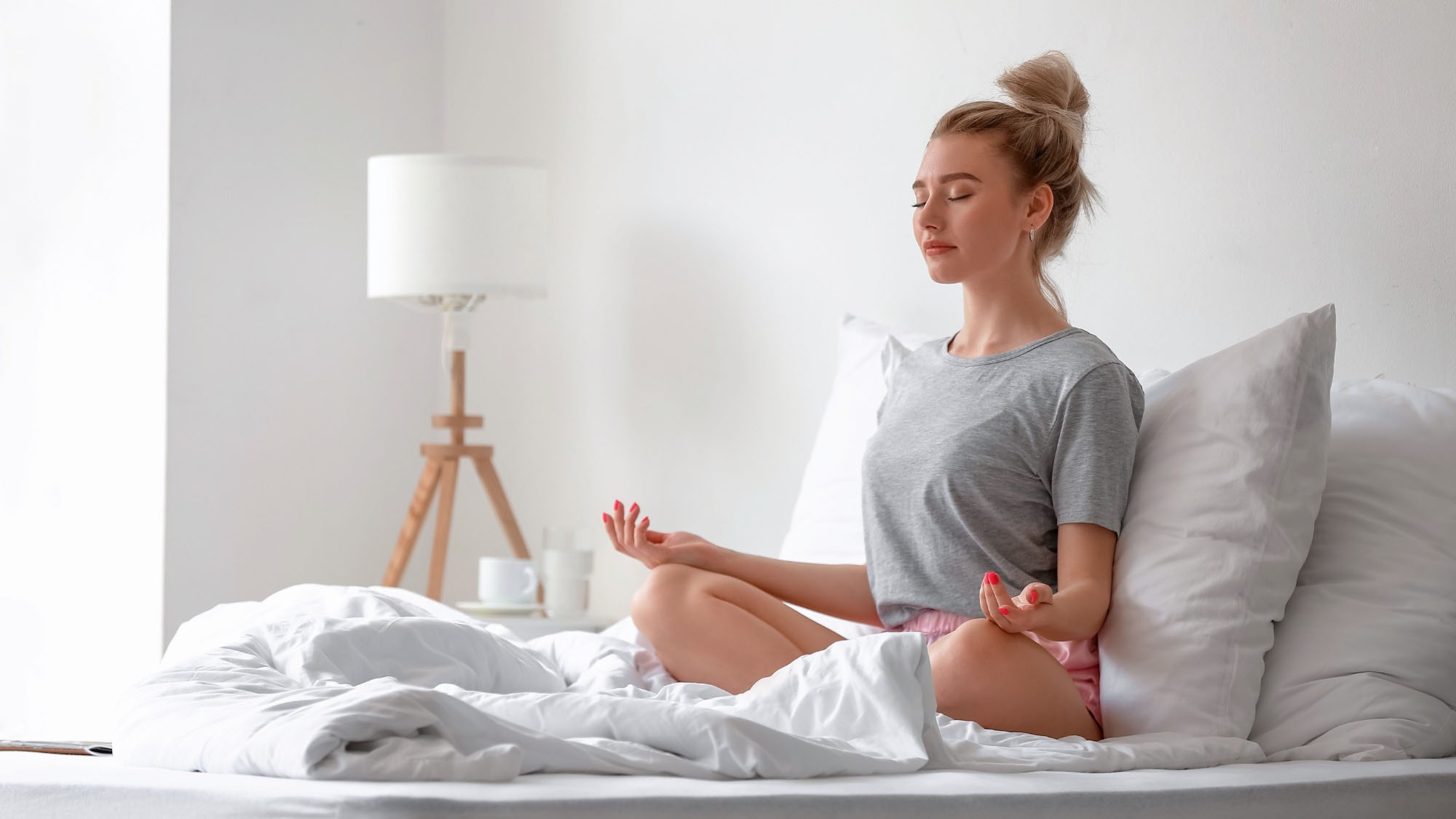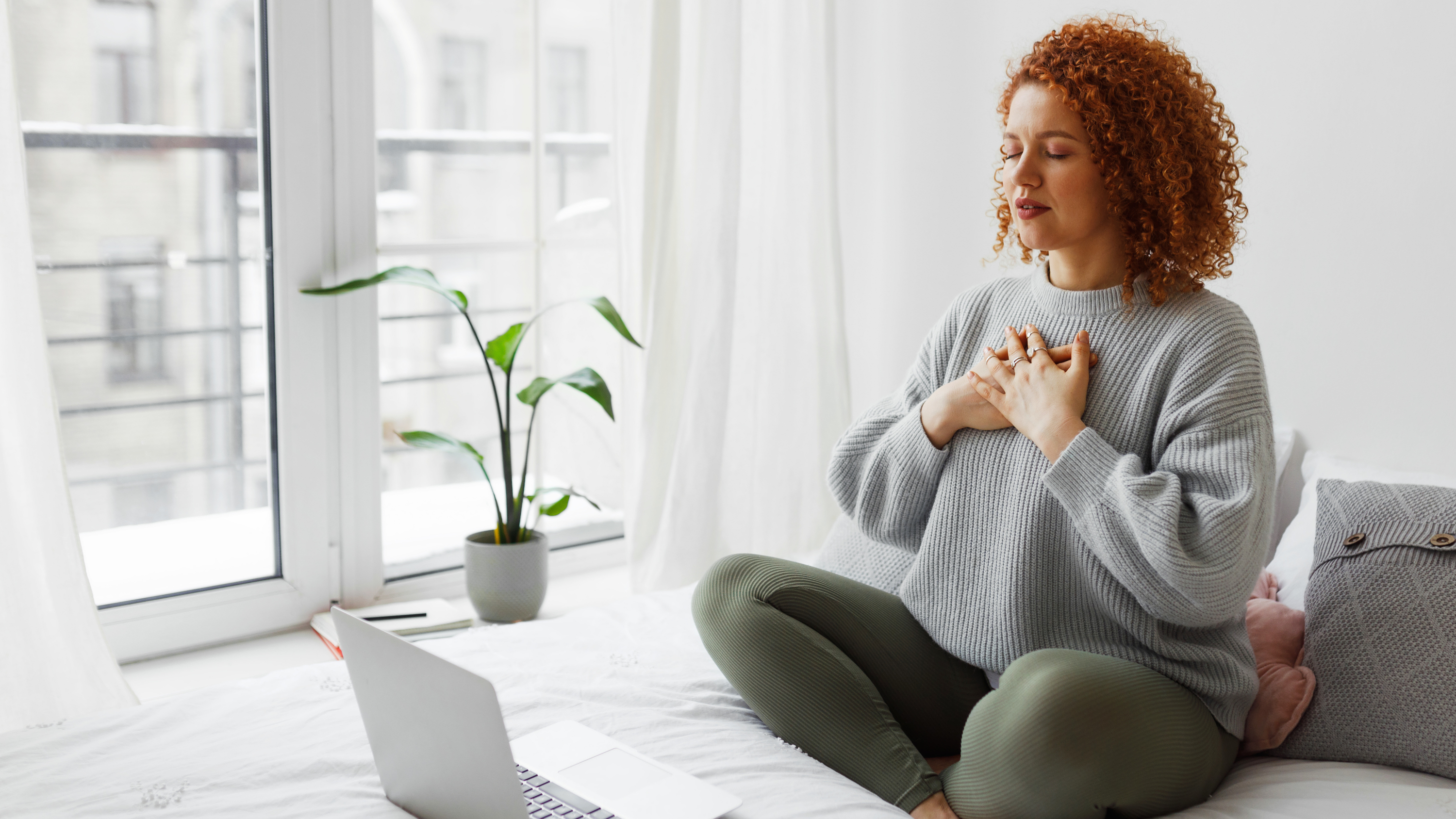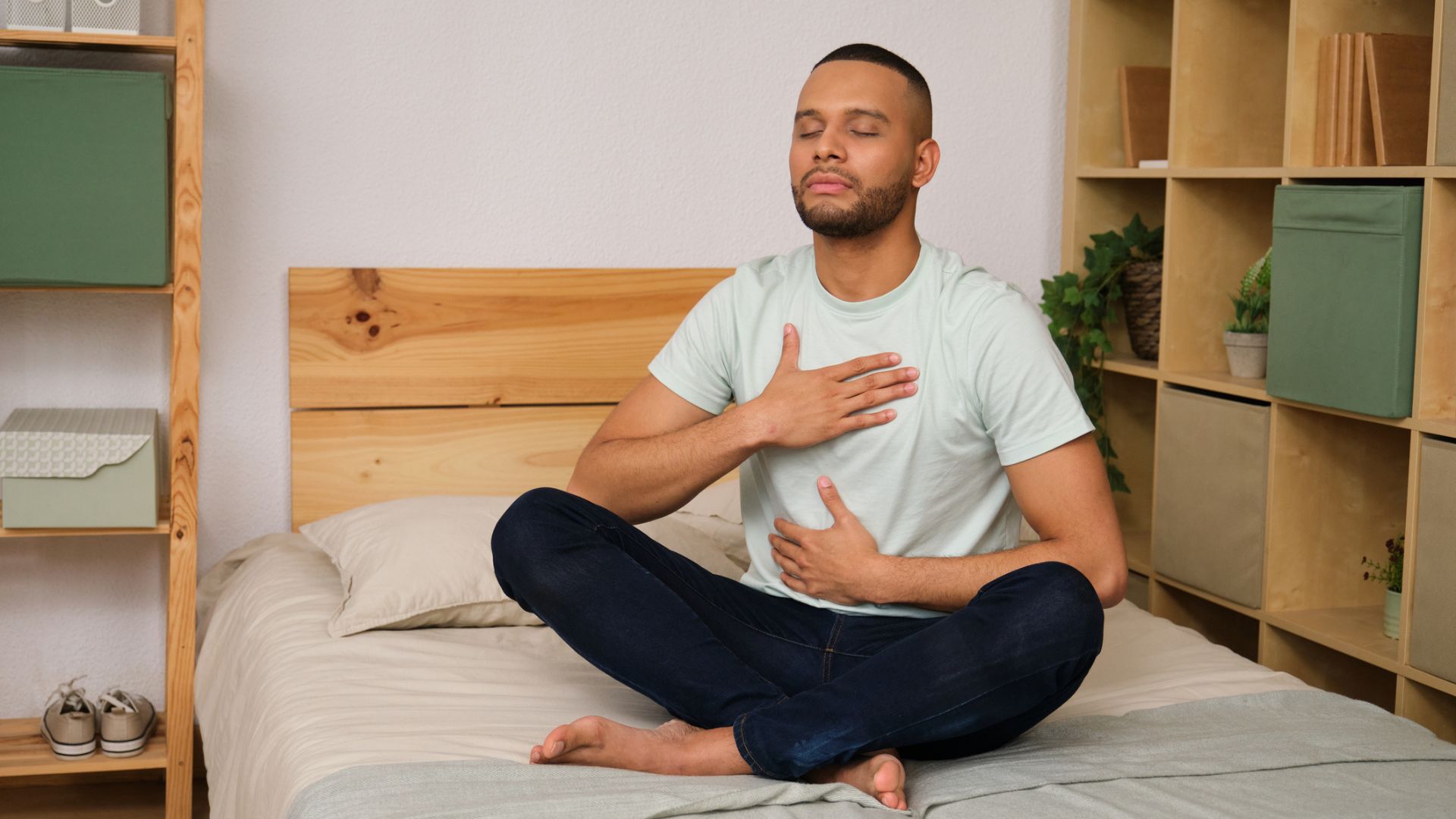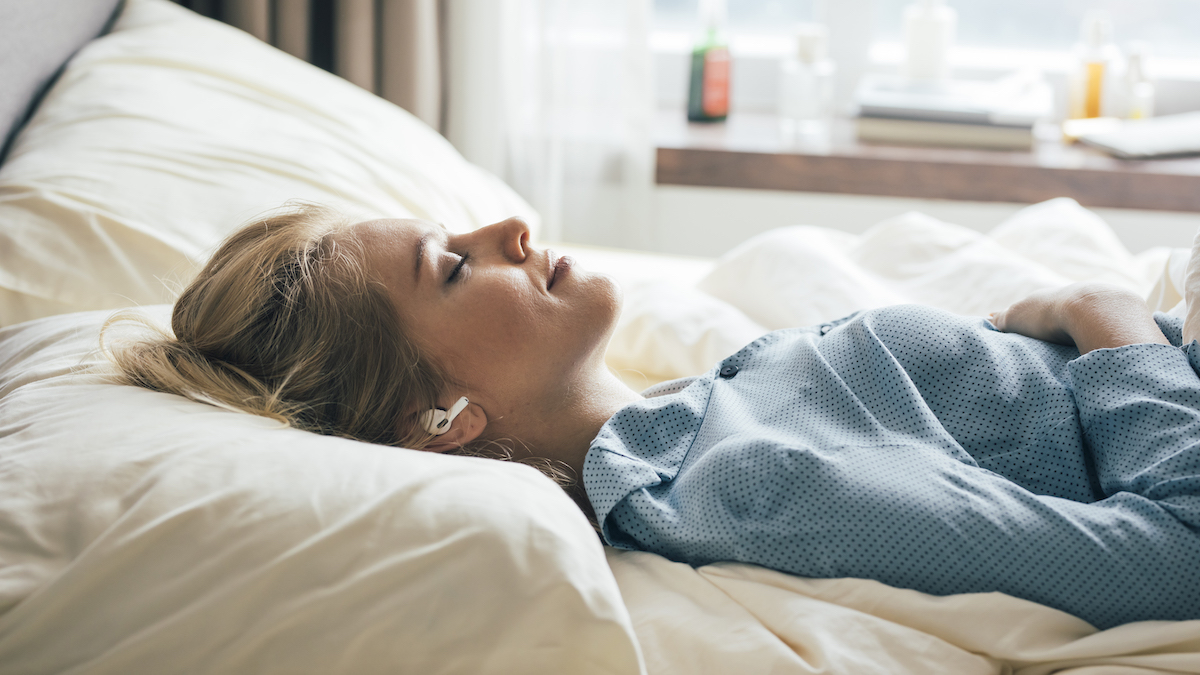What is sleep meditation and does it work? We ask the experts — plus 5 popular techniques to try
We explore how sleep meditation can help you get a better night's rest

Navigating modern life — where work, financial and social stresses, as well as the heightened stimulation we experience from a 24/7 online world and technology like smartphones — can mean the relaxed state required for sleep can often feel elusive.
Sleep meditation is one tool that can help you. Simply put, sleep meditation describes the different types of meditation you can practise in the lead up to your bedtime.
Mindfulness meditation can improve sleep quality in a variety of clinical populations with sleep disturbance
According to the National Health Service (NHS) in the UK, meditation can "help prepare our bodies and minds for a restful night's sleep" and potentially allow us to "fall asleep faster, sleep longer and even deeper."
And it's backed up by research. A review of studies into the effect of meditation on sleep found that "mindfulness meditation can improve sleep quality in a variety of clinical populations with sleep disturbance."
Here, we'll delve into exactly what sleep meditation is and how it can help us sleep more effectively. We'll also look at some of the most common types of sleep meditations that people can ultilize and how you can begin to explore this process yourself, including some simple tips to get you started.
To do this, we've spoken to UKCP-registered psychotherapist specialising in sleep and author of How to Be Awake (So You Can Sleep Through the Night), Heather Darwall-Smith and licensed clinical psychologist specializing in sleep and trauma, Dr. Leah Kaylor Ph.D. PLLC.
What is sleep meditation?
While you can practice meditation at any time of day, the focus of sleep meditation is to help your mind and body relax in the lead up to falling asleep.
Get instant access to breaking news, the hottest reviews, great deals and helpful tips.
The aim is that you will then be able to fall asleep more quickly and experience a night of rest that is less disrupted.
"Sleep meditation refers to any meditative practice done at bedtime (or during the night) with the intention of promoting restful sleep," explains Darwall-Smith.

"It typically involves techniques that calm the mind and relax the body, preparing you for sleep."
She explains that unlike meditations done during the daytime which may be intended to heighten focus and even alertness, these are intended for a smooth transition into sleep.
It’s about creating the conditions for relaxation and then letting sleep naturally arise
"Importantly, traditional meditation wisdom reminds us not to force anything – even with the goal of sleep, it’s about creating the conditions for relaxation and then letting sleep naturally arise," Darwall-Smith adds.
Dr. Kaylor says that sleep meditations "typically include techniques like deep breathing, body awareness, guided imagery, or visualization, and are often done while lying down or sitting comfortably in a quiet, dark space."
"Some people use apps, audio recordings, or just silence to guide the practice," she adds.
And, if you decide to give it a try, you'll be in good company. According to a study in Nature, 18% of US adults practice meditation.
In the UK, research shows that 15% of adults have learned to practice a form of mindfulness. It's a practice many turn to in challenging times. During the COVID-19 pandemic, meditation practice rose by 2,900% globally, according to the Global Wellness Institute.
How does sleep meditation work?
Meditation itself has its origins in India during the Vedic period (1500-500 BC) and in the many years since, research has shown a huge array of mental and physical benefits, including many that positively impact sleep; from reducing stress and anxiety, to increasing melatonin (the sleepy hormone) and decreasing sympathetic overstimulation.
"Sleep meditation helps by activating the parasympathetic nervous system — your body’s 'rest-and-digest' mode," Dr. Kaylor explains. "This is the opposite of the 'fight-or-flight' stress response driven by the sympathetic nervous system."
"When you're anxious or overstimulated before bed, your heart rate, breathing, and cortisol levels stay elevated—making it harder to fall or stay asleep," she adds.

One study of 100 healthy meditators and 100 healthy non-meditators found that "regular meditation increases parasympathetic dominance in our body."
The School of Medicine at the University of Utah describes this process in more detail, explaining that mindfulness, meditation and the deep breathing that is often involved can help activate the parasympathetic nervous system, a state in which, "your heart rate drops, blood pressure falls, breathing slows and deepens, pupils shrink, and muscles relax."
Taylor explains that even a few minutes of meditation before bed helps us to teach our body and brain that it is safe to switch off.
"Over time, this can help reduce the amount of time it takes to fall asleep, and improve the quality of your sleep by keeping you in deeper, more restorative stages of sleep for longer," she adds.
5 popular sleep meditations
While sleep meditation can really be any form of meditation that works for you, below we have looked at some of the more common meditations used to help with sleep.
1. Visualization
It may seem counterproductive to focus on visualizing when you want to get to sleep, but visualization meditations are meant to focus our mind away from any stress or racing thoughts, and instead on a vibrant mental image that is calming.

Both Dr. Kaylor and Darwall-Smith suggest walking through a forest or lying on beach.
"Sensory prompts such as 'feel the sun on your back' or 'hear the soft rustle of leaves' give your mind a single, calming storyline, crowding out racing thoughts," Darwall-Smith explains.
"The body often responds as though the scene is real – breathing steadies, muscles loosen – and sleep arrives sooner," she adds.
"[Visualization] helps distract the brain from racing thoughts and create a sense of safety and peace — key elements for falling asleep," Dr. Kaylor says.
2. Breath methods
Breath mediations are focused solely on observing (you guessed it) your breath. This can be as simple as focusing on the sensation of your natural breathing pattern (Calm has a simple step-by-step guide), or, as the National Health Service (NHS) in the UK suggests, trying a technique like 4-7-8 breathing to help you fall asleep.
Dr. Kaylor agrees. "Focused breathing—like the 4-7-8 method or diaphragmatic breathing—slows the nervous system, lowers blood pressure, and signals the body to transition toward sleep," she says.
"It’s one of the fastest ways to engage the parasympathetic system."

Below Dr. Kaylor shares a few simple breathing methods you can try:
Box Breathing:
Inhale for 4 seconds
Hold for 4 seconds
Exhale for 4 seconds
Hold for 4 seconds
Repeat this process
4-7-8 Breathing:
Inhale for 4 seconds
Hold for 7 seconds
Exhale slowly for 8 seconds
Repeat this process
Nasal Breathing:
Close one nostril and inhale through the other for 4-5 seconds
Switch nostrils and exhale through the opposite nostril
Repeat for several minutes
3. Guided meditation
If you're new to meditation, one of the easiest ways to try it out is through guided meditations, and you can find free ones designed for sleep in places like YouTube, Spotify and, of course, on meditation apps.
In these guided sleep meditations, "you listen to a teacher or recording that leads you through the process," of the meditation Darwall-Smith says, adding that this may include elements of breath work, visualization or perhaps a body scan.
"Several studies have found that guided meditation programs can improve sleep quality and reduce insomnia symptoms," she explains, noting that guided meditation has the effect of holding your hand into sleep.
This can "shorten sleep onset and decrease night-time awakenings (if you do rouse slightly, the ongoing voice can lull you back to sleep)."
Dr. Kaylor notes that guided mediations can be a great choice "for beginners who find silence intimidating!"
4. Body scan meditation
Despite the name, this type of meditation doesn't involve any medical equipment and can easily be done in the comfort of your own home.
"You mentally 'scan' your body from head to toe, noticing sensations without judgment," explains Dr. Kaylor.
"This helps release tension and brings awareness away from anxious thoughts, back into the present moment and your physical body."
You may also have heard body scan meditation referred to as progressive muscle relaxation (PMR), which is just referring to the aspect of a body scan where you "soften or release tension in each part," of the body you are scanning, Darwall-Smith says.

"It tends to start at the crown of your head, where you notice any tightness in your scalp or face, consciously relax those areas, and then move downward through the neck, shoulders, arms, and so on until you reach your toes," she adds.
"Body scans are deeply relaxing for most people and can readily lead to sleep. It’s common to doze off in the middle it," Darwall-Smith notes.
Here's Dr. Kaylor's step by step instructions to try it yourself:
- Lie in a comfortable position with your arms and legs extended and relaxed.
- Start with your toes and gradually work your way up to your head. For each muscle group, tighten the muscles for about 5 seconds, then release and relax for 20-30 seconds.
- Focus on the contrast between tension and relaxation. Do not tense to the point of physical pain.
- After each release, pay close attention to how your muscles feel as they relax, allowing the tension to melt away.
- Move through each part of your body.
5. Mindfulness meditation
Mindfulness meditation is the practice of being aware of ourselves and our environment in the moment, and doing so without reacting or judging.
The American Psychological Association describes it as having two main elements.
Mindfulness practice might simply mean sitting or lying in bed and tuning into the sensations of breathing or the feeling of the sheets against your skin
The first is "attention" — where you become aware of your thoughts, feelings, breathing and any physical sensations.
The second is "acceptance" — where you note these and let them go, without judgement or response.
"At night, mindfulness practice might simply mean sitting or lying in bed and tuning into the sensations of breathing or the feeling of the sheets against your skin," says Darwall-Smith, "and whenever thoughts about the day or worries about tomorrow arise, gently noting them and bringing attention back to the here and now."

When you do this, she says, it's important to aim for an attitude of kind, non-judgmental acceptance of whatever thoughts or feelings occur, and to combine this with steadily returning to the focus of your mindfulness practice.
She notes that research has shown older adults with moderate sleep disturbances who practiced mindfulness meditation showed improvement in "insomnia symptoms, depression symptoms, fatigue interference, and fatigue severity," compared to those who completed standard sleep education.
Do sleep meditations work for anxiety?
Many people will be familiar with the symptoms of nighttime anxiety, which can include having issues feeling relaxed before sleep, night sweats, being awoken by anxious thoughts, and even panic attacks.
"Night-time anxiety is the psychological pattern of feeling anxious, worried, or fearful predominantly at night, especially when trying to fall asleep, which is usually combined with raised heart rate and body temperature as well as bodily tension," says Darwall-Smith.

While it's always important to consult with your doctor if you're experiencing anxiety at any time of the day or night, multiple studies have shown that meditation can have a positive impact both in reducing anxiety symptoms and reducing study participants experience of anxiety.
"Sleep meditation addresses nighttime anxiety by helping to slow down intrusive thought patterns, allowing the mind to disengage from the constant stream of worry that often surfaces at bedtime," explains Dr. Kaylor.
"It also calms the physiological stress response, reducing heart rate and cortisol levels, which prepares the body for rest."
How to try sleep meditation yourself
If you're curious about sleep meditation, but aren't sure where would be best for you to start, why not give these simple steps for the basics of meditation from Dr. Kaylor a try.
- Lie down in bed or sit comfortably. Turn off lights and silence your phone or distractions.
- Try a sleep meditation app or YouTube video — guided meditations are great for beginners.
- Thoughts will pop up. That’s normal. Gently return your focus to your breath or the voice guiding you.
- Try meditating at the same time each night. Like any skill, it gets easier with practice.
While there are plenty of apps that you can download to help with your meditation journey, some require paid subscription.
An alternative is to search on YouTube, where you'll find a huge array of free guided meditations focused on everything from breath work to visualization, and more.
Give it a little time. Try to practice nightly for a couple of weeks and see how your body responds
And if you don't feel relaxed or notice an improvement in your sleep right away, there's no need to worry.
"Give it a little time. Try to practice nightly for a couple of weeks and see how your body responds," advises Darwall-Smith.
"Many beginners find that after about a week of regular evening meditation, they fall asleep faster or sleep more deeply."
While meditation is generally safe for everyone, Darwall-Smith adds that it may not be suitable for those who have cardiovascular, respiratory or neurological conditions, severe trauma or PTSD, or psychiatric vulnerability and in such cases, medical professionals should be consulted before any practice is undertaken.
Jenny Haward is a U.K. based freelance journalist and editor with more than 15 years of experience in digital and print media. Her work has appeared in PEOPLE, Newsweek, Huffpost, Stylist, ELLE, The Sydney Morning Herald and more. Jenny specializes in health, wellness and lifestyle, taking a particular interest in sleep.
You must confirm your public display name before commenting
Please logout and then login again, you will then be prompted to enter your display name.

